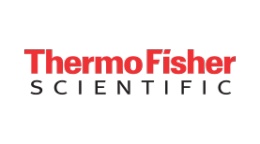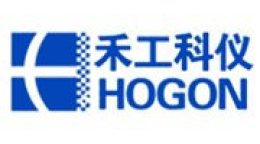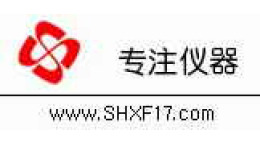方案详情文
智能文字提取功能测试中
Surfactants ofCleansers Star SeriesMethod Note M-1811-E 03/05RevB Surfactants ofCleansers 巧2 Introduction Key Words This procedure measures anionic surfactants in dishwashing liquid by using a manual titration techniquewith a surfactant electrode and the Orion 4-star meter. The Orion 9342BN Surfactant electrode is apotentiometric sensor, which indicates the endpoint in the titration of surfactants in solution. ·Surfactants·HouseholdCleaners·Manual Titration·lon SelectiveElectrode(ISE) Recommended Equipment Cat.No. 2. Surfactant electrode 9342BN Required Solutions Cat.No. 1. Diluted Triton X-100 654203 3. Double Junction Reference electrode 900200 4. ATC probe 927007MD 2.0(.01 M Sodium Lauryl Sulfate (SLS) 654202 5. Orion benchtop stirrer (or magnetic stir plate and bar) 096019 3. Reference Filling Solution (for inner chamber) 900002 Orion benchtop electrode stand 1110001 4. Reference Filling Solution (for outer chamber) 810007 Volumetric flasks (500 mL,1000 mL) 5. 0.05M Hyamine 1622 654201 8. Beakers (150 mL) 6. Electrode Rinse Solution (add 50 mL of 0.1 M HCL to 1000 mL of deionized water) 7. pH Adjuster (0.01 M HCL) 8.DIeionized water Sample Preparation 11. Find the endpoint by plotting a graph showing milliliters of Hyamine added versus first derivative asshown above. 1. Weigh 10 g of dishwashing liquid into a500 mL volumetric flask and dilute to the mark withdeionized water. Mix well. 12. Repeat steps 1 through 11 for additional samples. Upon completion of samples, rinse electrode withdeionized water and store the electrode according to instructions in the Electrode Storage section ofthis method note. 2.Pipette 25 mL of the prepared solution into analysis beaker, add 25 mL deionized water, 3 mL of0.01M HCL, and 1 mL Triton-X. 3. Repeat this procedure for additional measurements. ( Environmental Instruments Water Analysis Instruments ) ( 1 66 Cummings C enterBeverly, MA 01915 USA M - 1 8 11-E 03/05 R evB 2 50310 - 0 0 1 A ) Toll Free: 1-800-225-1480Tel:1-978-232-6000Dom. Fax:1-978-232-6015IntlFax:978-232-6031www.thermo.com/waterO 2005 Thermo Electron Corporation RegisteredIS O9001:2000 All rights reserved Surfactants of Cleansers Results Five aliquots of prepared dishwashing liquid were analyzed by manual titration. An Excel spreadsheet was usedto find the end point by plotting milliliters of Hyamine added versus millivolt readings. The concentration ofthe anionic surfactants in percent (w/w) as Sodium Lauryl Sulfate is calculated using the following formula: Anionic Surfactants Concentration in % (w/w)=V*Conc *FW*100/1000*W, where: V = volume of titrant, Hyamine, in milliliters ConcH = concentration of the titrant, in moles FW = molecular weight of Sodium Lauryl Sulfate (288.5 g/mol)W =sample weight in the aliquot of sample solution (0.5 g) Dishwashing liquid % Sodium Lauryl Sulfate Sample #1: 8.66 Sample #2: 8.66 Sample #3: 7.93Sample #4: 7.93Sample #5: 8.66 iMean: 8.37 Standard Deviation: 0.40%CV: 4.78 Electrode Storage The Orion 9342BN Surfactant electrode should be stored dry. The Orion 900200 double junction referenceelectrode may be stored in air between sample measurements (up to 1 hour). For short periods of time, upto one week, store the electrode in its filling solution or in deionized water. The solutions inside the referenceelectrode should not be allowed to evaporate and crystallize. For storage longer than one week, drain theelectrode completely, rinse with deionized water and store dry. Setup Electrode Setup-Surfactant Electrode Orion 93-42 Before using the Surfactant electrode, soak the tip in 0.0001 M Sodium Lauryl Sulfate for 10 minutes. Prepare0.0001 M Sodium Lauryl Sulfate by diluting 1 mL of 0.01 M SLS standard to 100 mL with deionized water. Orion 90-02 - Reference Electrode . To fill from the flip-spout bottle, lift the spout to vertical position, place the spout in the electrode fillinghole, and squeeze the bottle firmly. 2.To fill the inner chamber, use only Orion 900002 colored filling solution. 3. Unscrew the electrode cap and slide cap and spring up the cable. Push down on top of inner chamber untilthe cone at the bottom end can be grasped using a tissue. Grasp cone and pull inner chamber free of outersleeve. Slide rubber sleeve at the top of inner chamber down to uncover filling hole. Using the flip-spoutbottle, fill inner chamber up to fill hole and slide rubber sleeve back up. If having trouble filling innerchamber, add some solution and shake electrode down like a clinical thermometer, repeat until filled. Wipeexcess filling solution off inner chamber surfaces and slide inner chamber completely up into outer sleeve.Place the spring back on inner chamber and screw cap on until finger-tight. 4 To fill outer chamber, use Orion 810007 filling solution. Using the flip-spout bottle, add a small amountof filling solution through the filling hole in the outer sleeve. Tip the electrode to moisten the green o-ringon the electrode body. Holding the electrode by the cap in one hand, push the outer sleeve up to the capwith the other hand, allowing the filling solution to wet the inner cone. Release the sleeve, check to seeriithat the end of the sleeve is flush with the bottom surface of the cone, and fill the outer chamber up to thefilling hole. If the sleeve does not return to the correct position, push it gently down into place. Meter Setup -4 Star benchtop For initial meter setup, follow the steps on the Reference Panel that is attached to the meter itself. The QuickStart Guide included with each meter also contains a layout of the meter keypad for reference. The words inthis method represented all capital letters such as POWER indicate a key on the meter, and words in quotationssuch as “Unit"indicates information on the meter display. 1.Connect the surfactant electrode to the meter. 2Connect the reference electrode to the meter.3Connect the temperature probe to the meter. 4 Connect the stirrer to the meter. 5. Press the POWER key on the meter to turn the meter on. 6. Note that the arrow on the left of the screen indicates the active line. If the top line is not active, press theLINE SELECTION key to change the selected line to the top line. Then press the UP or DOWN arrowkeys to change the measurement mode of the top line to “mV”. 7.Press the MEASURE key to return to the measurement mode. If all steps were followed correctly the meter display will show“mV" to the right of the top line. The meter and electrode are now ready for calibration. Calibration and Analysis 1. Before the titration, rinse the surfactant electrode with an acid rinse solution and blot dry with a soft, lint-free tissue. 2. Place the surfactant electrode, reference electrode, temperature probe, and stirrer into the beaker withsample such that the electrode tip is fully immersed in the solution. The stirrer should be positionedslightly below the tip of the electrode. Press the STIRRER key on the meter to turn the stirrer on. 3. Fill a buret with 0.05 M Hyamine 1622. 4. Wait for a stable reading (1-2 minutes). Record the electrode potential. 5..Start the titration by adding Hyamine in increments of 0.5 mL at the beginning of the titration, then inincrements of 0.1 mL to 0.25 mL in the region of the endpoint. 6 Record the electrode potential after each addition of the titrant. 7. The endpoint is at that volume of the titrant where the potential changes dramatically in the positivedirection. Continue the titration 1 to 2 mL past the endpoint. 8 Press the STIRRER key to turn the stirrer off. 9 Use the Excel spreadsheet to find the endpoint by plotting milliliters of Hyamine added versus millivoltreadings. 10. Tabulate the data for each titration run in a spreadsheet as shown in the table below. The first column isthe total volume of Hyamine 1622 added at each data point. The second column is the millivolt readingat each data point. The third column is the first derivative of the data calculated by dividing the changein millivolt between two consecutive readings by the change in added volume between two consecutivereadings. www.thermo.comofof of f
关闭-
1/2
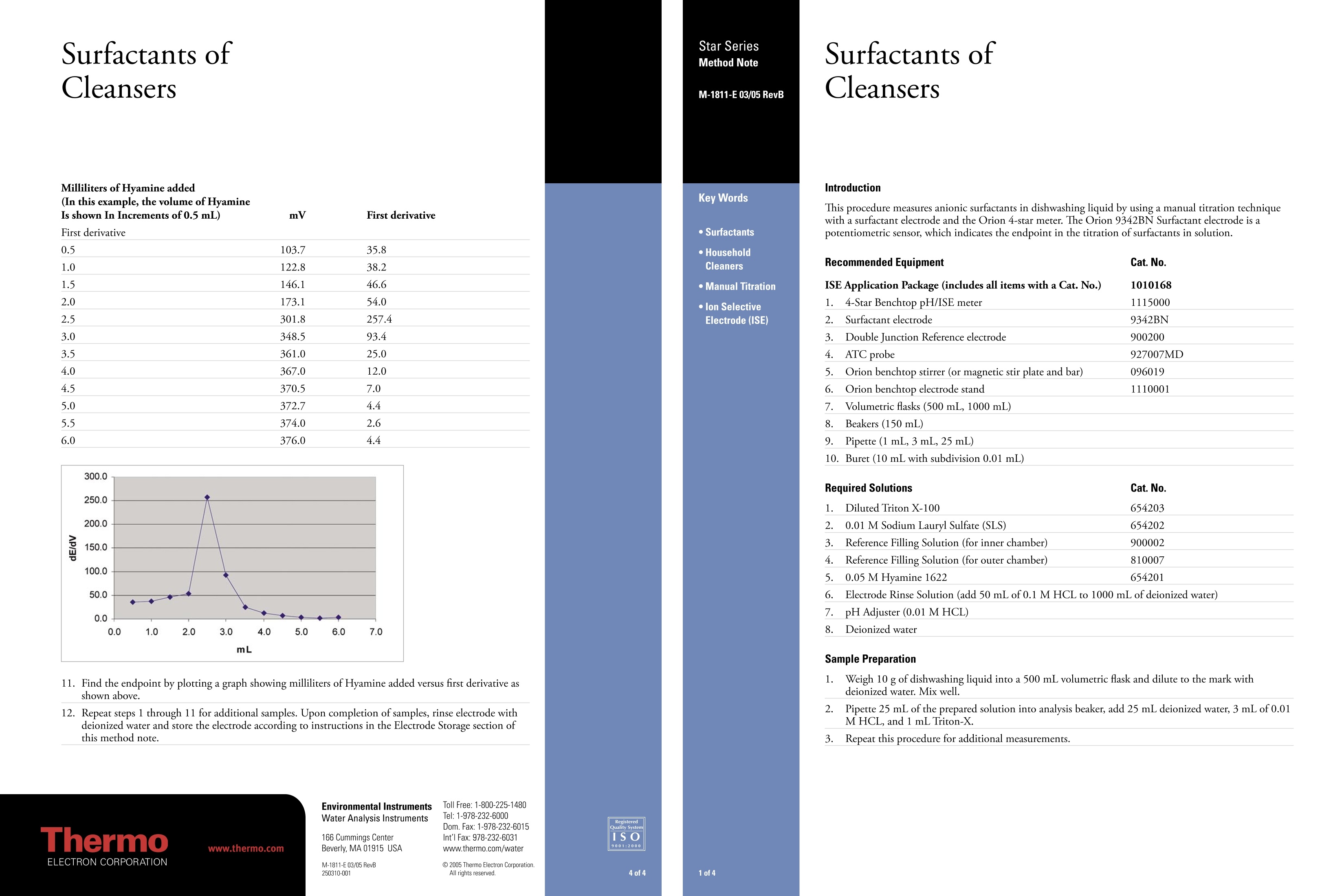
-
2/2
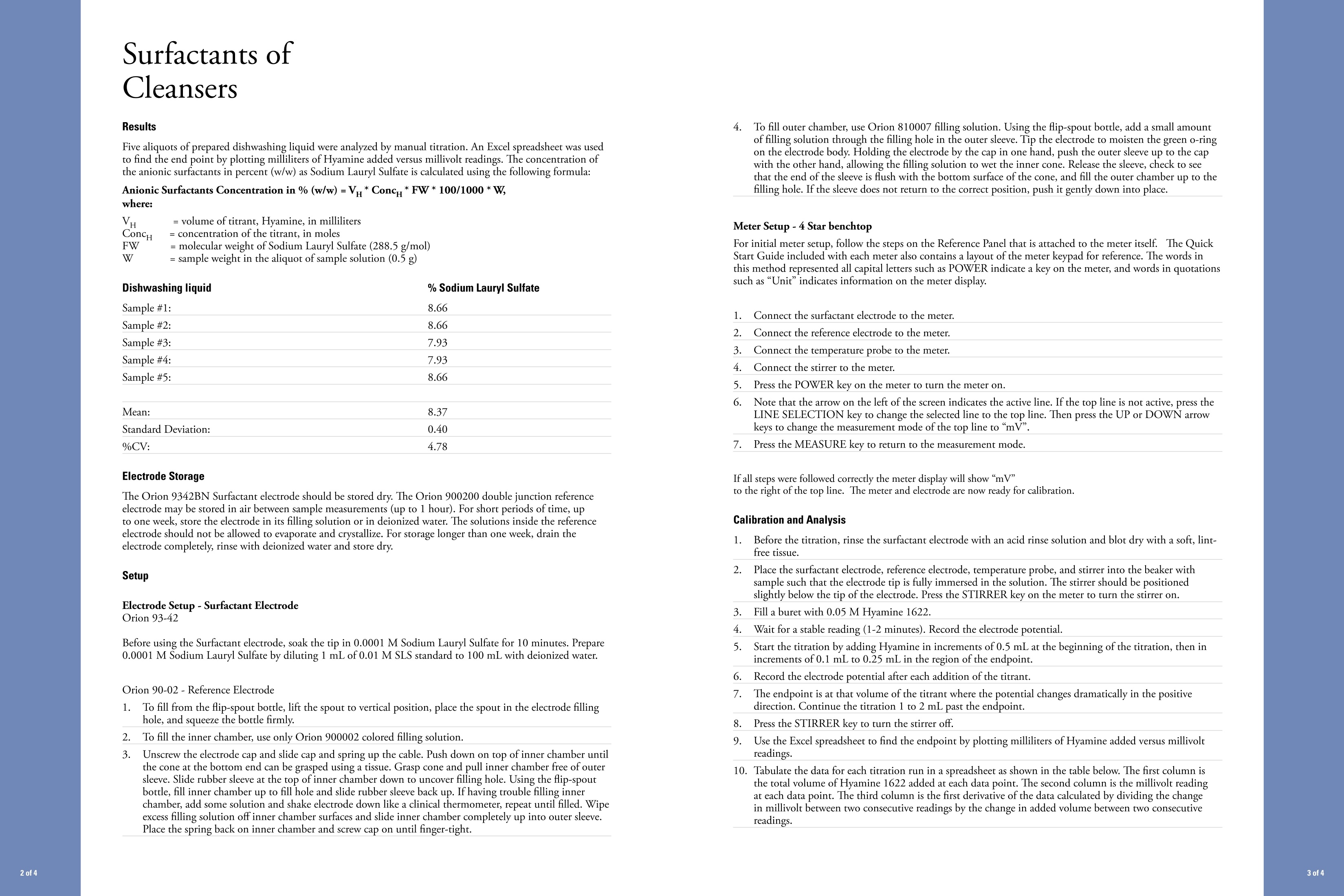
产品配置单
赛默飞中国实验室产品事业部为您提供《清洁剂中表明活性剂的测定》,该方案主要用于其他中null检测,参考标准《暂无》,《清洁剂中表明活性剂的测定》用到的仪器有台式pH/ORP/ISE/溶解氧/电导率测量仪、Orion 4-Star台式(便携式)pH/离子浓度测量仪。
我要纠错
推荐专场
水质分析仪/多参数水质分析仪
更多相关方案


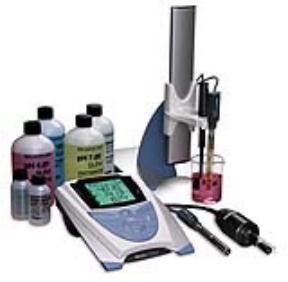
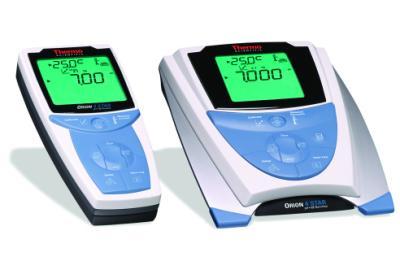
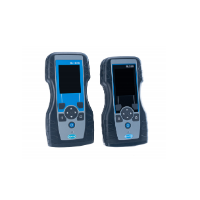
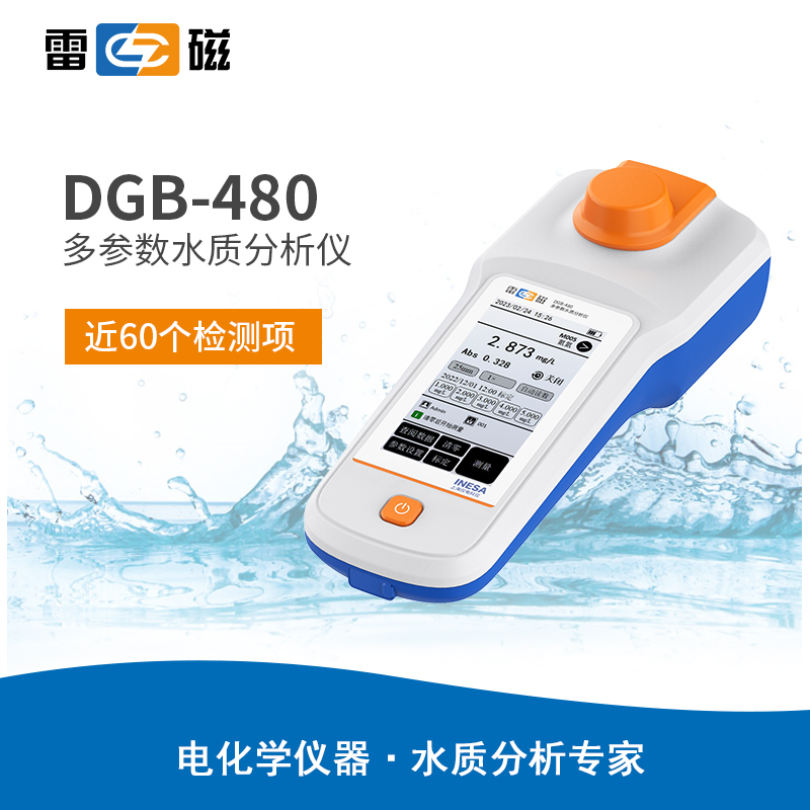
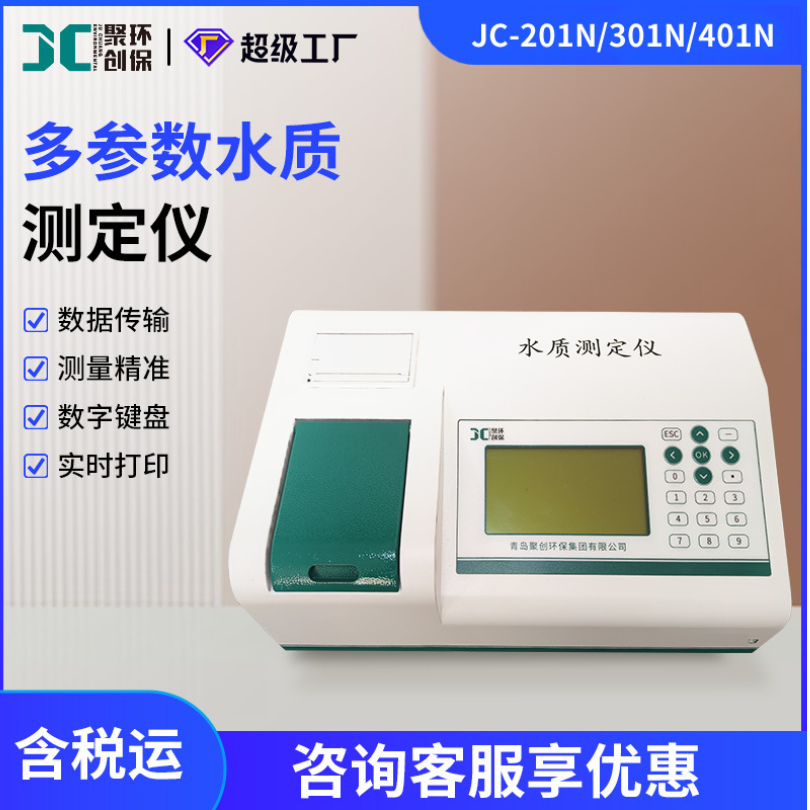
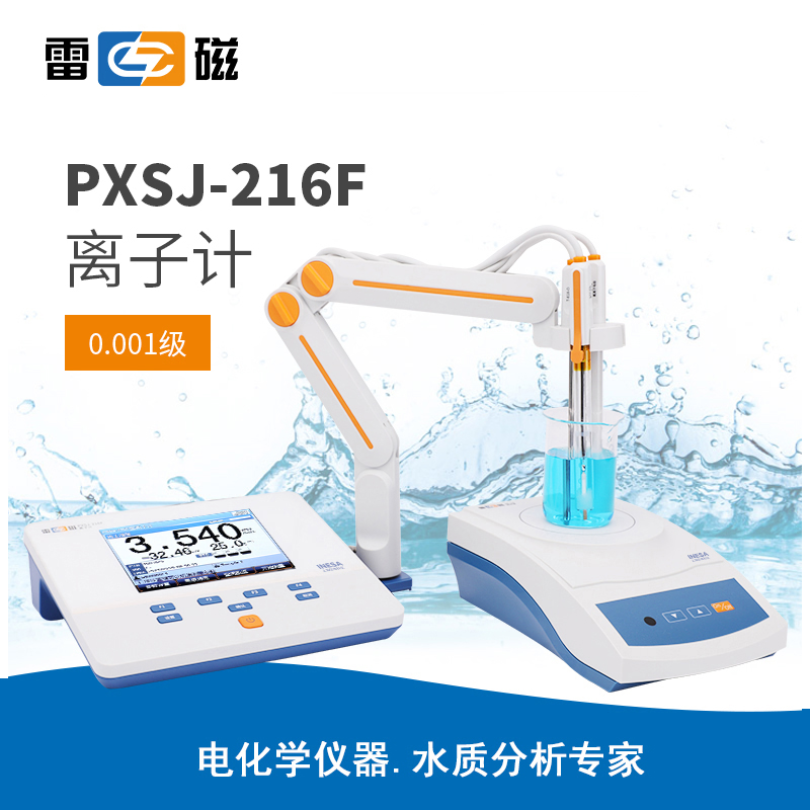
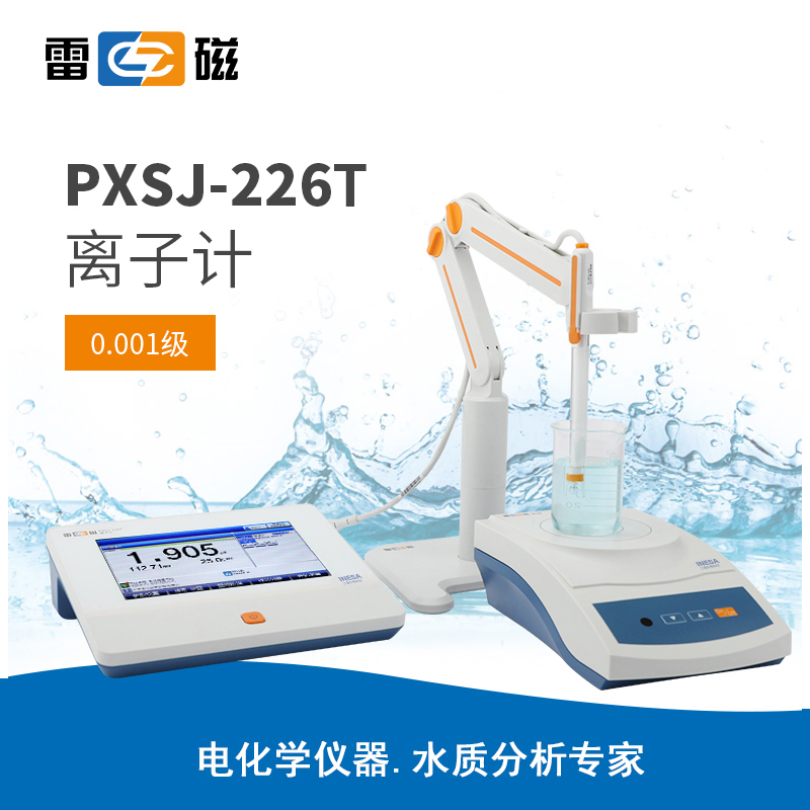
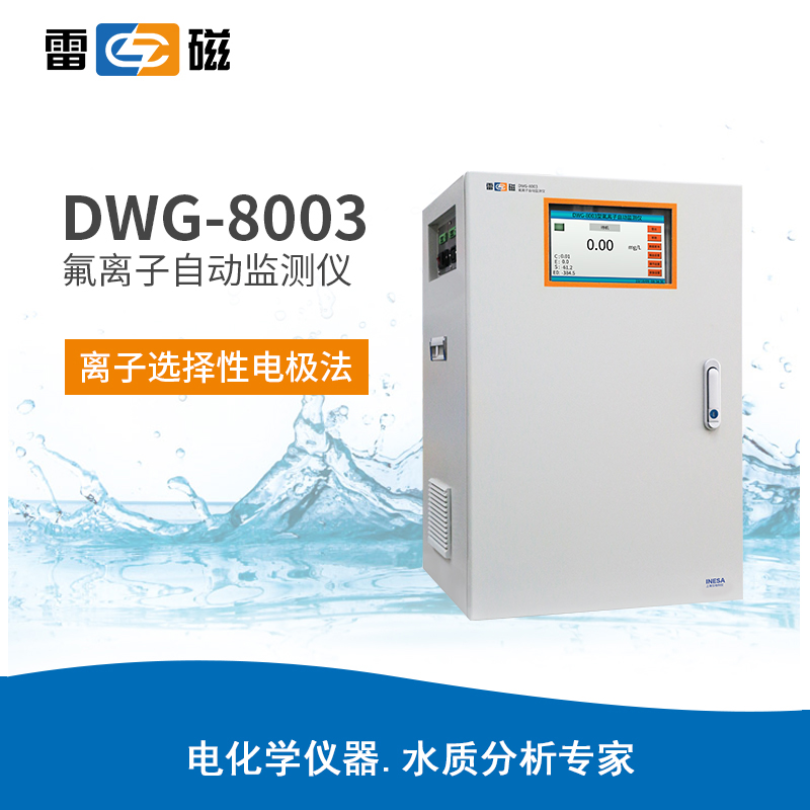
 咨询
咨询